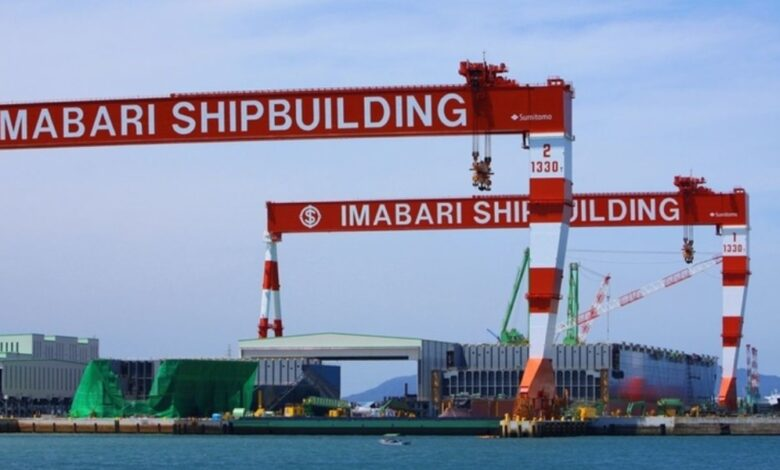Japan is considering bold steps to revive its once-dominant shipbuilding industry, including the creation of a government-backed national shipyard, as part of a broader strategy to restore maritime manufacturing capabilities that are vital to national security.

Japan submits shipbuilding industry revival plan to create “national shipyard”
On June 20, Japan’s ruling party, the Liberal Democratic Party, submitted a proposal to Prime Minister Shigeru Ishiba on revitalizing the country’s shipbuilding industry. The proposal suggests restoring idle shipbuilding and maintenance facilities, while incentivizing public and private investment in next-generation shipyard infrastructure.
Japan’s planned national shipyard will be built using the “state-owned facility private operation” approach, which means that the shipyard will be built by government and then outsourced to private enterprises.
The Nikkei Shimbun pointed out: “If a new shipyard is built in Japan, the project content such as dock construction and large lifting equipment is expected to cost 50 billion to 80 billion yen (about US$341 million to US$546 million). Therefore, if the government bears the construction costs, it can reduce the burden on companies.”
It is reported that Japan’s shipbuilding industry revival plan will be based on the 2022 Economic Security Promotion Act, which enables the government to directly support industries deemed critical to national interests.
To this end, Japan is considering including “hulls” in the scope of specific important materials stipulated in its “Economic Security Promotion Act” and plans to set up a fund to raise 1 trillion yen (about US$ 6.822 billion) for equipment investment. It will promote the use of digital technology to improve the efficiency of ship development, design, and construction; improve the talent training base, allow more foreign workers to enter the Japanese shipbuilding industry and provide them with better training, etc.
Japan plans to double shipbuilding capacity by 2030 as new industry leaders take office
During the industry downturn, Japan’s shipbuilding industry is also seeing new changes. Yukito Higaki, President of Imabari Shipbuilding, Japan’s largest shipbuilding group, has been appointed as the new Chairman of the Japan Shipbuilding Industry Association (JSIA). He becomes the first leader of the association to come from a specialized commercial shipyard rather than diversified heavy industry enterprises such as Mitsubishi Heavy Industries or IHI.
After taking office as chairman of the Japan Shipbuilders’ Association, Yukito Higaki has set ambitious shipbuilding targets: by 2030, Japanese shipbuilders will regain at least 20% of the global shipbuilding market share, doubling the current level.
Although Japan has proposed a massive development plan for its shipbuilding industry, time may be running out for Japanese shipyards.
According to a report by Danish Ship Finance, unless Japanese shipyards can obtain a large number of new ship orders, the average capacity utilization rate may drop sharply from 50% in 2025 to 20% in 2027. This will not only have a huge impact on shipbuilding in the shipbuilding industry, but may also lead to the loss of skilled workers. The company also warned: “Japanese shipyards may face the problem of insufficient capacity utilization, which indicates a mismatch between capacity and commercial competitiveness.”
Regarding this revival plan, officials from Japan’s economic sector stated, “From an economic security perspective, reviving the shipbuilding industry is crucial. We will collaborate with the Ministry of Land, Infrastructure, Transport and Tourism to strengthen the resilience of the supply chain and ensure a stable supply of ships.”
Several long-established shipbuilders exit the market, putting Japan’s shipbuilding industry in jeopardy
In the 1990s, Japanese shipbuilders accounted for nearly 50% of global shipbuilding output. Today, their market share has plummeted to about 10%, far behind China (which accounts for 70% of global new shipbuilding capacity and 90% of repair capacity) and South Korea (its long-time regional competitor).
Analysts say fierce price competition has caused Japan’s shipbuilding industry to lose market share rapidly, while Chinese and South Korean shipyards have benefited from extensive government subsidies and economies of scale. According to Clarkson data, Chinese shipyards accounted for 69% of new ship orders in 2024, South Korea accounted for 15%, and Japan accounted for only 7%.
According to data released by the Japan Ship Exporters Association (JSEA), in May this year, Japanese shipbuilders received orders for 13 new ships with a total tonnage of only 88.41 million, a decrease of about 48% from 35 ships and 1.701 million gross tonnage in the same period last year.
As Japan’s position in the global new shipbuilding market gradually weakens, several long-established shipbuilding companies in the country have announced their withdrawal from the market.
Earlier this year, Mitsui E&S Holdings transferred its remaining 34% stake in Mitsui E&S Shipbuilding to Tsuneishi Shipbuilding Group. Upon completion of the transaction, Mitsui E&S Shipbuilding will become a wholly owned subsidiary of Tsuneishi Shipbuilding, marking Mitsui E&S Holdings’ complete withdrawal from the shipbuilding business, its “ancestral industry.”
Prior to this, Sasebo Heavy Industries and Sumitomo Heavy Industries announced their withdrawal from the shipbuilding industry in 2022 and 2024, respectively, reflecting the continued decline of Japan’s shipbuilding industry.


